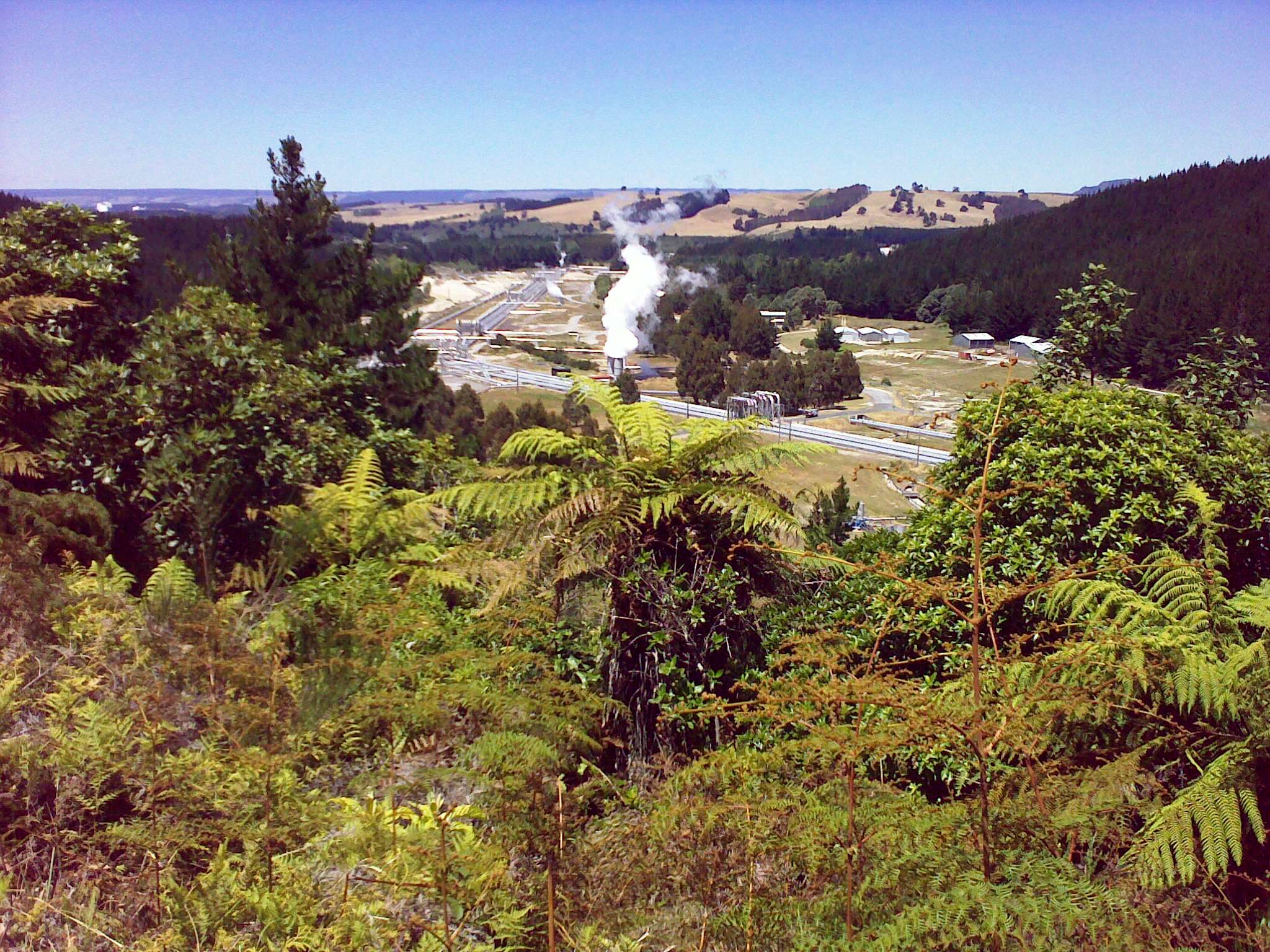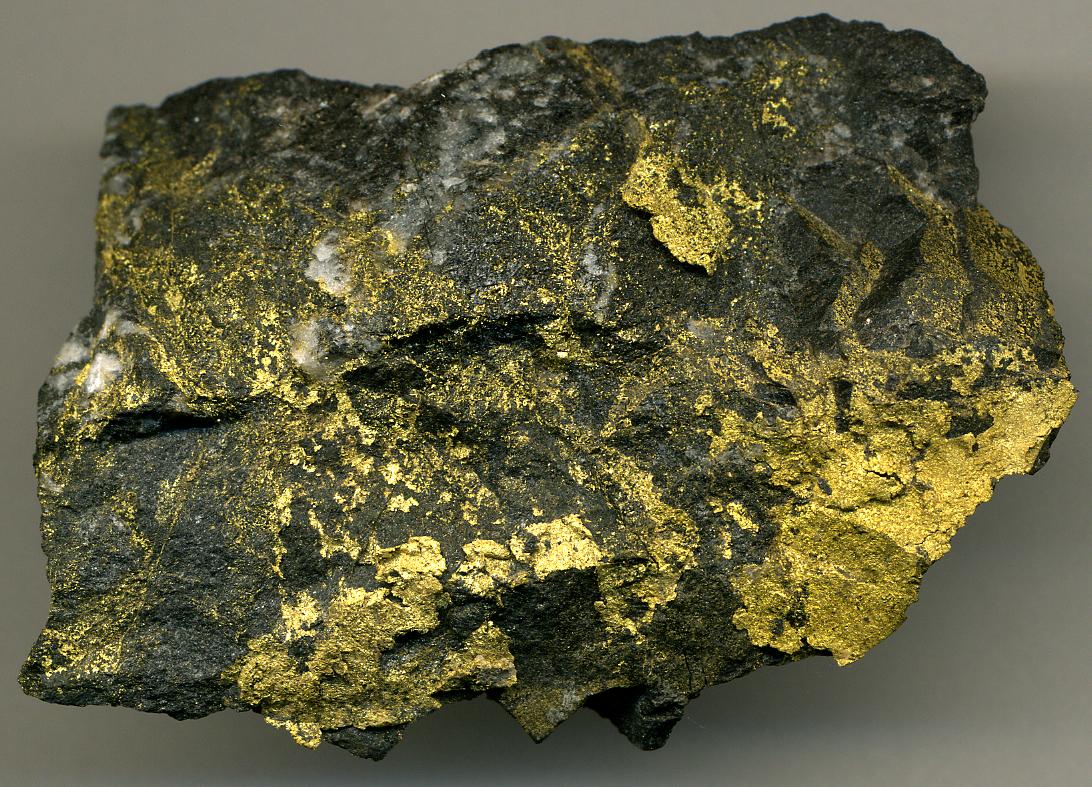Rare Earth Elements
The rare earth elements (REEs) consist of the lanthanides, a series of elements from Lanthanum to Lutetium (element numbers 57-71). Yttrium and scandium are included as well due to their similar chemical behaviour. Typically, grades of REEs are reported as total rare earth elements (TREE) or total rare earth oxide (TREO). If yttrium or scandium are included in the total, the notation is typically TREE+Y and/or +Sc.
Critical elements are those that are in high demand and are at a significant risk of supply disruption. Rare earth elements essentially embody the term critical. Due to China’s control of about 95% of the supply of these elements, they have a very high criticality (susceptibility to supply disruption). The low global supply is due to the high cost of processing REE-bearing minerals since most of these require exceptionally high temperatures and potent acids to liberate the metals. Due to their unique properties, the REEs are irreplaceable in technological components, alloys, ceramics, and permanent magnets.
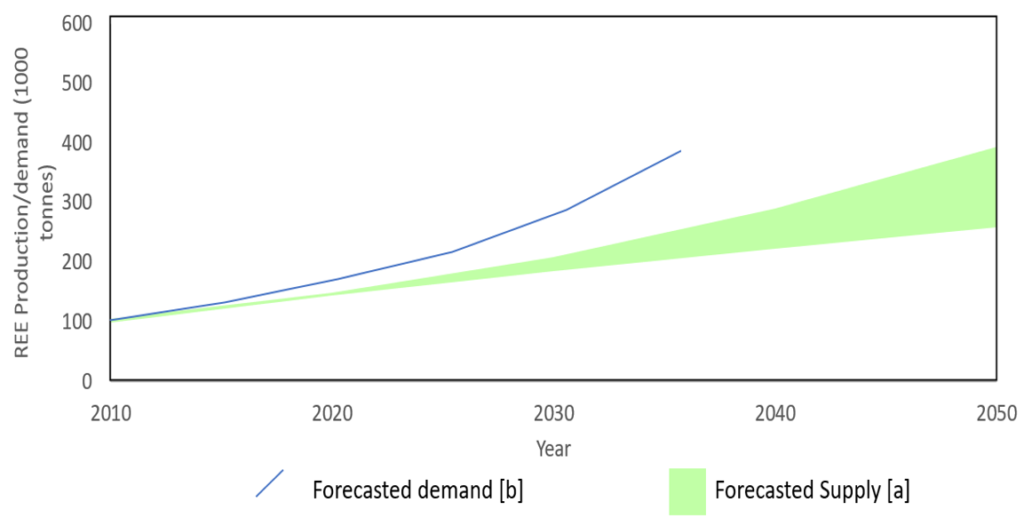
Before the 1960’s, there was very little REE mining in places like India, Brazil and South Africa. Once coloured television sets emerged on the market, the supply and demand for the REEs increased. At the time, the Mountain Pass Mine in California made the United States the world’s largest producer of REEs. However, in the 1970’s and 1980’s, China overtook the USA as the top producer, and the low cost of their REE products caused many mines in other countries to close, including the Mountain Pass Mine. As the price of REEs rose due to China’s application of export quotas, interest has risen to reopen past producing mines and explore for new REE deposits. Because the demand for REEs is likely going to quickly outstrip supply, there has been growing interest in the last decade to develop REE mines in around the globe. A result of this interest is Texas Mineral Resource Corp.’s (TMRC) Round Top Mountain Project, the only rhyolite-hosted REE deposit with an NI43-101 compliant resource. It represents a potential new class of high-tonnage REE deposits.
Round Top Mineral Exploration History
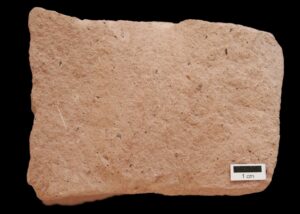
Initially, mineral exploration at Round Top Mountain was focused on fluorite deposits starting in 1969. In the 1980’s, Cabot Corporation explored for beryllium resources and entered into a joint venture agreement with Cyprus Metals Company to continue exploration. However, the project became dormant after Cyprus left the beryllium mining industry. The project fell under control of the Texas General Land Office in the 1990’s before being acquired by Standard Silver Corporation, now known as Texas Mineral Resources Corp. in 2010.
Geological Overview
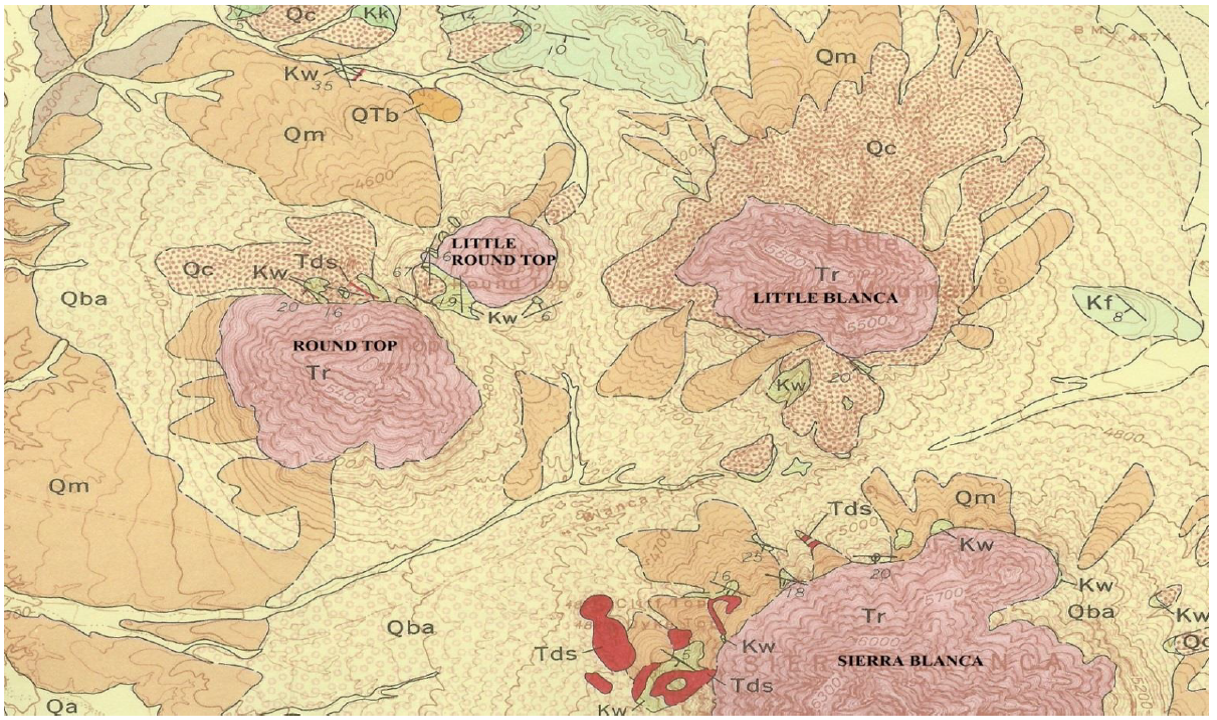
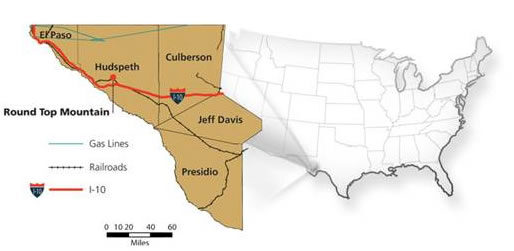
Round Top Mountain is one of five rhyolitic intrusions called the Sierra Blanca Peaks, located approximately 120 km southeast of El Paso in Hudspeth County, western Texas. The approximately 36.2 million year old Round Top Mountain is a fluorine-rich, high-silica rhyolite, similar to Spor Mountain, Utah. Rhyolite, an extrusive igneous rock, was sourced by a magma that was generated in an extensional tectonic regime. The rhyolite magma underwent extensive fractional crystallization, resulting in the gradual accumulation of lithium, beryllium, REEs and uranium, among other rare metals. As the rhyolite cooled, a vapour phase separated from the rhyolite and caused variable alteration of the rhyolite. This led to the mineralization of REEs, beryllium and uranium. The rhyolite intruded into the Cretaceous limestones of the Buda formation.
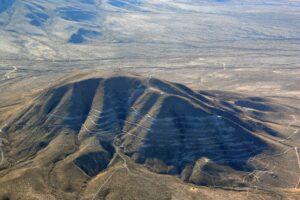
Round Top Mountain is about 2 km in diameter and reaches over 375 m high. It is estimated the rhyolite has a mass of 1.6 billion tonnes and a remarkably consistent TREE+Y concentration of over 500 ppm. Therefore, the TREE+Y content of Round Top Mountain is estimated to be about 80 million tonnes, making it a potential low-grade, high-tonnage deposit, which some have heralded as the REE equivalent of porphyry copper deposits. Moreover, these deposits tend to be more enriched in heavy rare earth elements (HREEs), REEs with atomic numbers greater than 62. Most other deposits are light-REE (LREE)-enriched, making these rhyolites potentially more economic.
Project Overview
The Round Top Mountain project consists of 950 acres of highly prospective rhyolite which the company divided into five units based on colour: red, pink, tan, brown, and gray rhyolite. The colours of the rhyolite represent the presence and intensity of hematitic (replacement of magnetite with hematite) and hydrothermal alteration. Geochemical work by TMRC indicates the highest TREE+Y contents occur in the gray and pink rhyolite units (554 and 615 ppm) while the red and tan units contain around 8% less TREE+Y. The brown unit exhibits the lowest TREE+Y contents, with about 23% less than the gray and pink units.
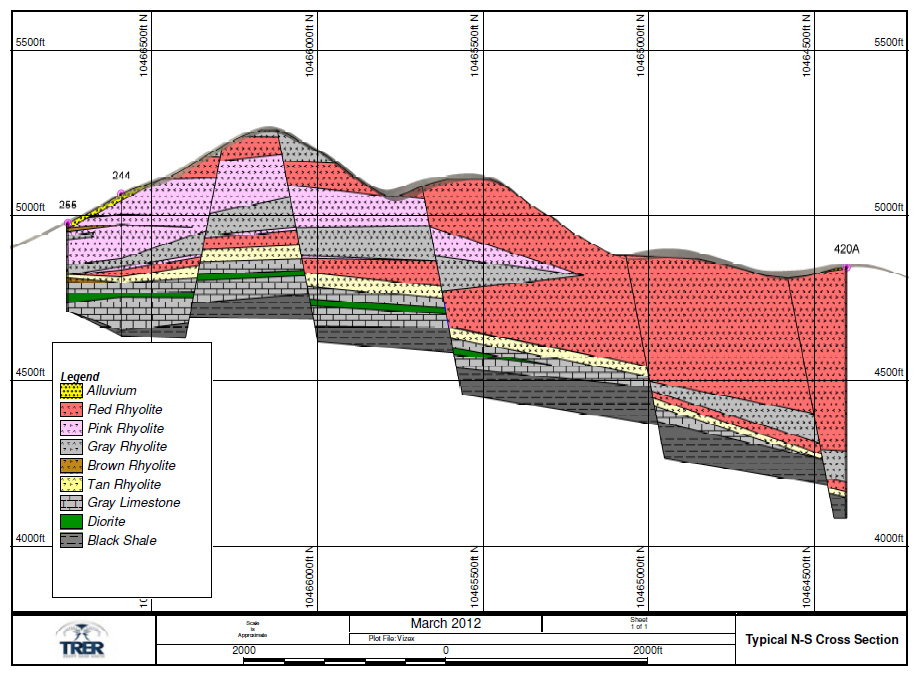
Three different types of mineralization have been noted:
- Rare earth element mineralization occurs throughout the rhyolite as finely disseminated Y-rich fluorite (informally known as yttrofluorite) and other REE-bearing accessory minerals in vugs and crystal coatings with fluorite, columbite and cryolite.
- Beryllium mineralization occurs as behoite, berborite, bertrandite, chrysoberyl and phenakite in the northwest part of the intrusion in the Buda limestone formation and the contact between the limestone and the rhyolite.
- Uranium mineralization occurs as secondary kasolite, schopite, uranophane and sklodowskite at the contact between the rhyolite and the sedimentary host rocks. It also occurs with the beryllium-rich fluorite and quartz that replaces limestone along the floor of the intrusion and altered rhyolite.
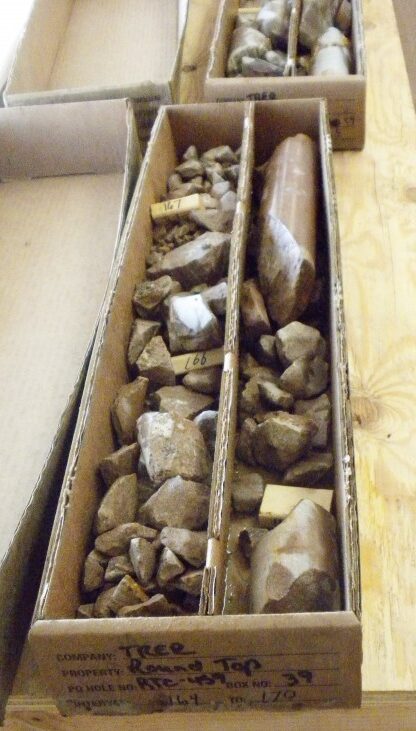
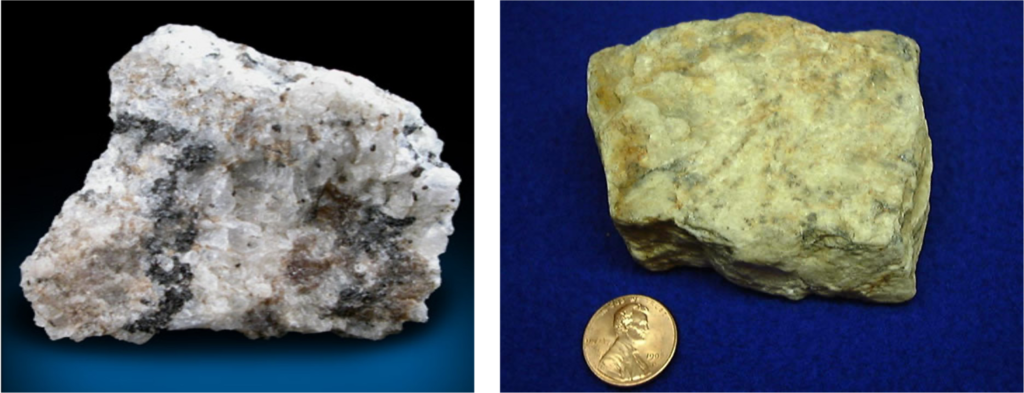
Currently, the exploration focus is on the REE mineralization; however, in TMRC’s August 2019 Preliminary Economic Assessment (PEA), the company identified three streams of revenue: 1) REE products; 2) technology metal products, including lithium and uranium; and 3) industrial and fertilizer sulfate products. The PEA also called for the mining of 20,000 tonnes per day and heap leaching, to produce approximately 2200 tonnes per year, which includes 1900 tonnes of HREEs for approximately 20 years. At current spot prices, the company estimates an internal rate of return of about 70% and an annual revenue of approximately $396 million.
Due to a lack of funding, TMRC could no longer explore and develop the Round Top project for the foreseeable future. Thus, in August 2018, TMRC executed a joint venture with USA Rare Earth LLC (formerly Morzev Pty Ltd.) in which USA Rare Earth will explore and develop the project to develop a bankable prefeasibility study to gain a 70% stake in the project with the option to purchase an additional 10%. The goal of the joint venture is for the mine to become fully operational by 2023.
Outlook
As of now, it is too early to speculate much on the project with an incoming change in management; however, there are several advantages to the project. Current PEA estimates by TMRC indicate that at current prices, the deposit is already profitable with a juicy IRR of 70%. An expected increase to the rapid rise in demand for REEs should only make this deposit more economic. Furthermore, there is easy access by rail and interstate, and to the electrical grid and natural gas. And as a major “discount,” the deposit is fully exposed and therefore, no overburden will need to be removed. The HREE content is similar to China’s ionic clay deposits, however, research has suggested these metals can be recovered from rhyolite deposits more efficiently and with a smaller environmental impact. Moreover, the mineralogy is favourable for heap leaching with dilute sulfuric acid and without need for fine grinding with a recovery of greater than 70%.
The Round Top deposit is an interesting project worth keeping an eye on. Since the deposit represents a new REE deposit type, keep an eye out for exploration of other similar deposits with high concentration of the more valuable HREEs.
Companies Mentioned
Further Reading
- Wang, J., Guo, M., Liu, M. and Wei, X. (2020) Long-term outlook for global rare earth production. Resource Policy 65:101569. (pdf)
- Alonso, E., Sherman, A.M., Wallington, T.J., Everson, M.P., Field, F.R., Roth, R. and Kirchain, R.E. (2012) Evaluating rare earth element availability: a case with revolutionary demand from clean technologies. Environmental Science And Technology 46:3406-3414. (pdf)
- TMRC 2019 annual report: (pdf)
- Brief history of REE mining (website)
- TMRC 2014 corporate presentation (pdf)
- Pingitore N.E. Jr., Clague, J.W. and Gorski, D. (2018b) Remarkably Consistent Rare Earth Element Grades at Round Top Yttrofluorite Deposit. Advances in Materials Physics and Chemistry 8:1-14. (pdf)
- Pingitore N.E. Jr., Piranian, M., Negron, L.M. and Gorski, D. (2018) Microprobe Mapping of Rare Earth Element Distribution in Round Top Yttrofluorite Deposit. Advances in Materials Physics and Chemistry 8:15-31. (pdf)
- Jowitt, S.M., Medlin, C.C. and Cas, R.A.F. (2017) The rare earth element (REE) mineralization potential of highly fractionated rhyolites: A potential low-grade, bulk tonnage source of critical metals. Ore Geology Reviews 86:548-562. (pdf)
- Negron, L., Pingitore, N. and Gorski, D. (2016) Porosity and Permeability of Round Top Mountain Rhyolite (Texas, USA) Favor Coarse Crush Size for Rare Earth Element Heap Leach. Minerals 6(1):16. (pdf)
- Pingitore N., Clague, J. and Gorski, D. (2014) Round Top Mountain rhyolite (Texas, USA), a massive, unique Y-bearing-fluorite-hosted heavy rare earth element (HREE) deposit. Journal of Rare Earths 32(1)90-96. (pdf)
- Kyger, N. (2013) Geology and Geochemistry of the Sierra Blanca Rare Earth Complex, Sierra Blanca, Texas [M.Sc. thesis]. University of Texas at El Paso. (pdf)
- Price J.G., Rubin, J.N., Henry, C.D., Pinkston, T.L., Tweedy, S.W. and Koppenaal, D.W. (1990) Rare-metal enriched peraluminous rhyolites in a continental arc, Sierra Blanca area, Trans-Pecos Texas; Chemical modification by vapor-phase crystallization. Geological Society of America Special Paper 246. (pdf)
- Rubin, J.N., Price, J.G., Henry, C.D. and Koppenaal, D.W. (1987) Cryolite-bearing and rare metal-enriched rhyolite, Sierra Blanca Peaks, Hudspeth County, Texas. American Mineralogist 72:1122-1130. (pdf)
Subscribe for Email Updates


